
The Trump 2.0 administration is possessed by a lust for minerals. Trump’s latest critical minerals edict, Immediate Measures to Increase American Mineral Production, appeared in mid-March. It’s part of a barrage of actions to facilitate even easier mining corporation pillage of public lands than currently exists under the US’s 1872 Mining Law.
The Center for Western Priorities statement details how this order expanded critical minerals to include “uranium, copper, potash, gold, and any other element, compound or material as determined by the Chair of the National Energy Dominance Council NEDC. NEDC was “made up by President Trump to do his bidding on energy and minerals issues and is not accountable to Congress or to the public. The EO seeks to give Burgum, at his own discretion or at Trump’s direction, the power to declare any substance to be a mineral eligible for special treatment”.
The order requires federal agencies to consort with miners, work to nix the Rosemont court ruling that limited mine waste rock dumping on federal land, give priority to mining over other uses of public lands (so much for multiple abuse), and applies the Defense Production Act to allow mineral processing on military bases.
Alarmingly, it also makes a move toward privatization of public lands:
“The EO directs the secretaries of all federal land management agencies to identify as many sites as possible that may be suitable for private commercial mineral production, and to enter into extended use leases with private companies for mineral production … This starts the process of giving away national public lands to private mining companies to exploit and profit from …”.
This would mean privatizing public land and turning it over to foreign mining corporations. Many big mines are ultimately controlled by foreign companies, who spin off US fronts to get US tax breaks, gigantic loans and other benefits like Canadian Lithium Americas Thacker Pass mine has gotten via its US arm, Lithium Nevada, and that Australian Jindalee now seeks through its US spin off Jindalee Lithium. Trump’s frenzied mining-related actions may also expand US mineral grabs and critical minerals colonialism across the globe, to obtain minerals used heavily in waging Wars.
Hot on the heels of Trump’s order, Vale Oregon BLM announced a 5-day comment period for a draft Environmental Assessment (EA) for Jindalee’s McDermitt Exploration project. This crazily short comment period jolted the public into action. BLM received 1500 comments in 5 days. Quietly, late on the 5th day, BLM extended the comment period to the usual 30 days.
The Jindalee project would tear apart a project area of 7200 acres of irreplaceable sagebrush habitat in the northern McDermitt Caldera. Jindalee seeks 30 miles of new routes, 261 drill pad sites, each with a vile drilling wastewater sump, an unspecified number of boreholes, sideways drilling, and additional disturbance zones. There are no alternatives considered other than No Action. Not even one single drill site less, or any increased controls on drilling and bulldozing damage. BLM sidesteps an EIS by pretending there won’t be significant harm inflicted.
Jindalee has already drilled 60+ sites here over the past few years under NEPA-less Notice activity. BLM’s mining regulations allow what they define as less than 5 acres of disturbance to be done without any public review. BLM documents reveal that all past Jindalee exploration boreholes have encountered groundwater at an average depth of 179 feet below the surface, with drilling occurring down to 600 ft. Now BLM proposes to astronomically increase the drilling site number and disturbance area (5 acres before, now proposed 100 acres), and would allow deeper drilling down to 800 ft, further threatening perennial water flows and riparian habitats of the area’s small and often intermittent streams.
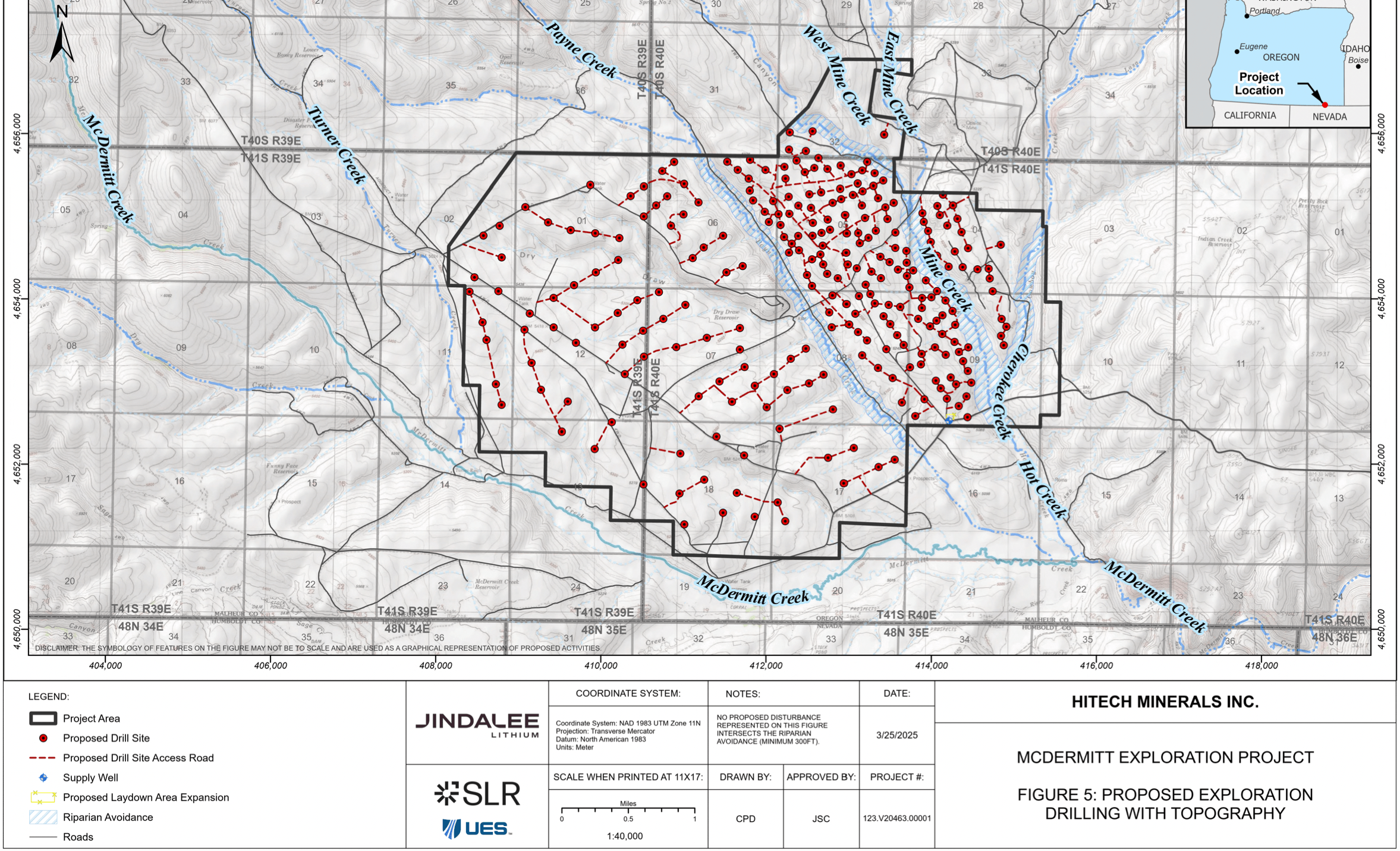
Maps show how close drill sites and routes are to streams like Mine Creek (named for an old mercury mine with a pollution legacy) and Payne Creek. The mainstem of McDermitt Creek, a stream system targeted for Lahontan Cutthroat Trout recovery, is only a mile from several drill sites. The Jindalee project is less than a mile from the Nevada state line.
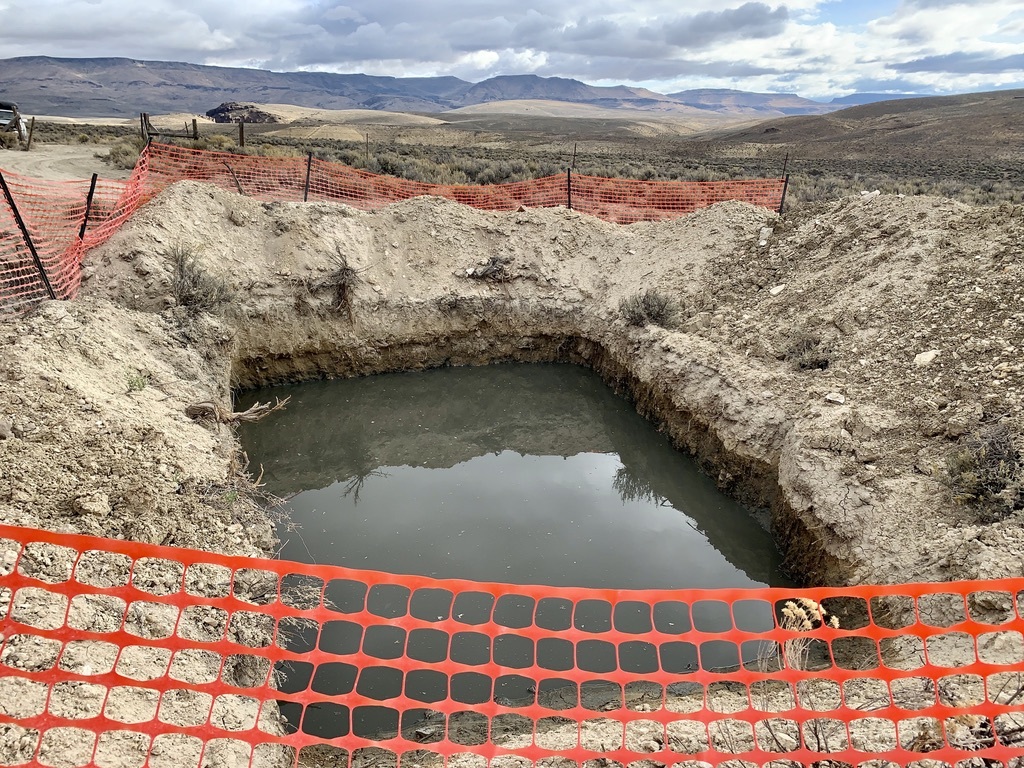
A Jindalee 2022 sump, with drilling waste water left to pollute the earth.
Exploration drilling can significantly damage shallow aquifer areas, or even dry up perennial surface water flows in springs and streams. A large amount of past exploration drilling around Thacker Pass in the southern Caldera is believed to be a cause of springs drying up pushing the King’s River Pyrg, an endemic mollusk, towards extinction. It sure seems to me (admittedly not a geologist) that developing a full-blown lithium mine – which of course is where this major Oregon exploration project is leading – would have serious effects to the region’s already stressed waters. This is a headwater area of the Quinn system. The Quinn basin in Nevada is already over-allocated and faces new strain from Thacker Pass water use and groundwater impacts.
Jindalee’s previous NEPA-less drilling has already ripped up some sagebrush areas, fragmented habitat, and spread of weeds like cheatgrass and halogeton that are increasing over time. “Reclamation” under BLM’s pathetic recovery standards greatly fails to protect the vulnerable sagebrush ecosystem. After mining companies degrade habitats and depauperate populations of animals and plants with dense drilling, and weeds proliferate, they then turn around and claim the habitat is sub-par if they move to develop a full-blown mine.
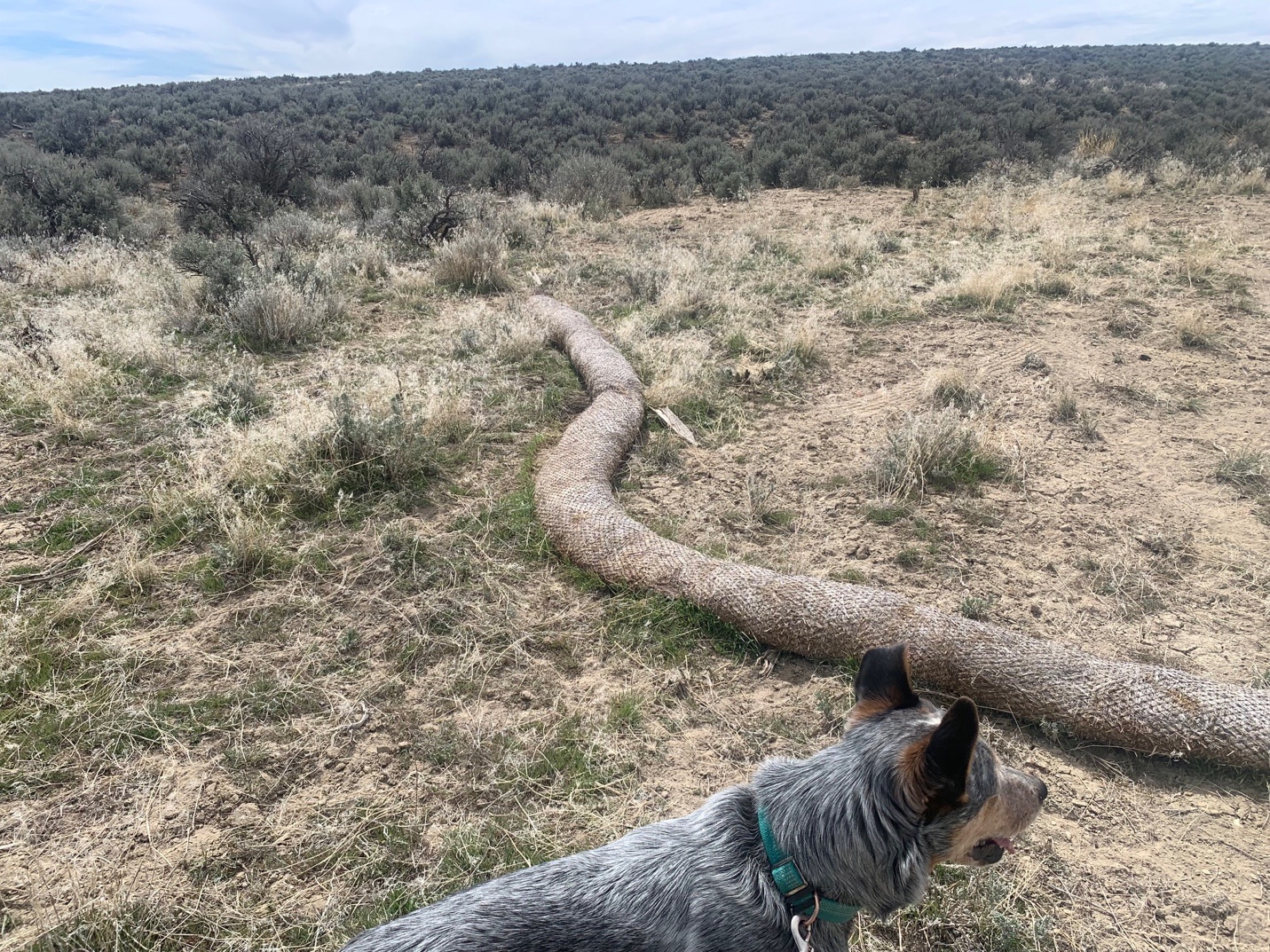
Cheatgrass at an older Jindalee drill site. There’s an abrupt transition between many bulldozed drilling sites and surrounding undisturbed sagebrush where weeds are absent.
Jindalee Project Bludgeons Caldera Biodiversity
All the project site, and nearly the entire McDermitt Caldera, were slated to be withdrawn from mineral entry under the 2015 Sage-grouse plans. The Caldera sagebrush habitat was identified as part of the “best of the best” remaining in the West. The promise of Interior Department withdrawal of this region was one of the excuses given by Interior Secretary Sally Jewell for not listing Sage-grouse under the ESA. This was initially derailed by litigation, then by Trump 1.0, then by 4 years of Biden BLM foot-dragging. The EA reveals the great significance of the Jindalee site, which is unburned mature sagebrush in a big basin-like setting surrounded by leks:
“There are 2 occupied, active leks within the Project Area, and 20 occupied leks (12 active, 8 inactive), 5 pending leks (2 active, 3 inactive), and 9 unoccupied (inactive) leks within 4 miles of the Project Area”.
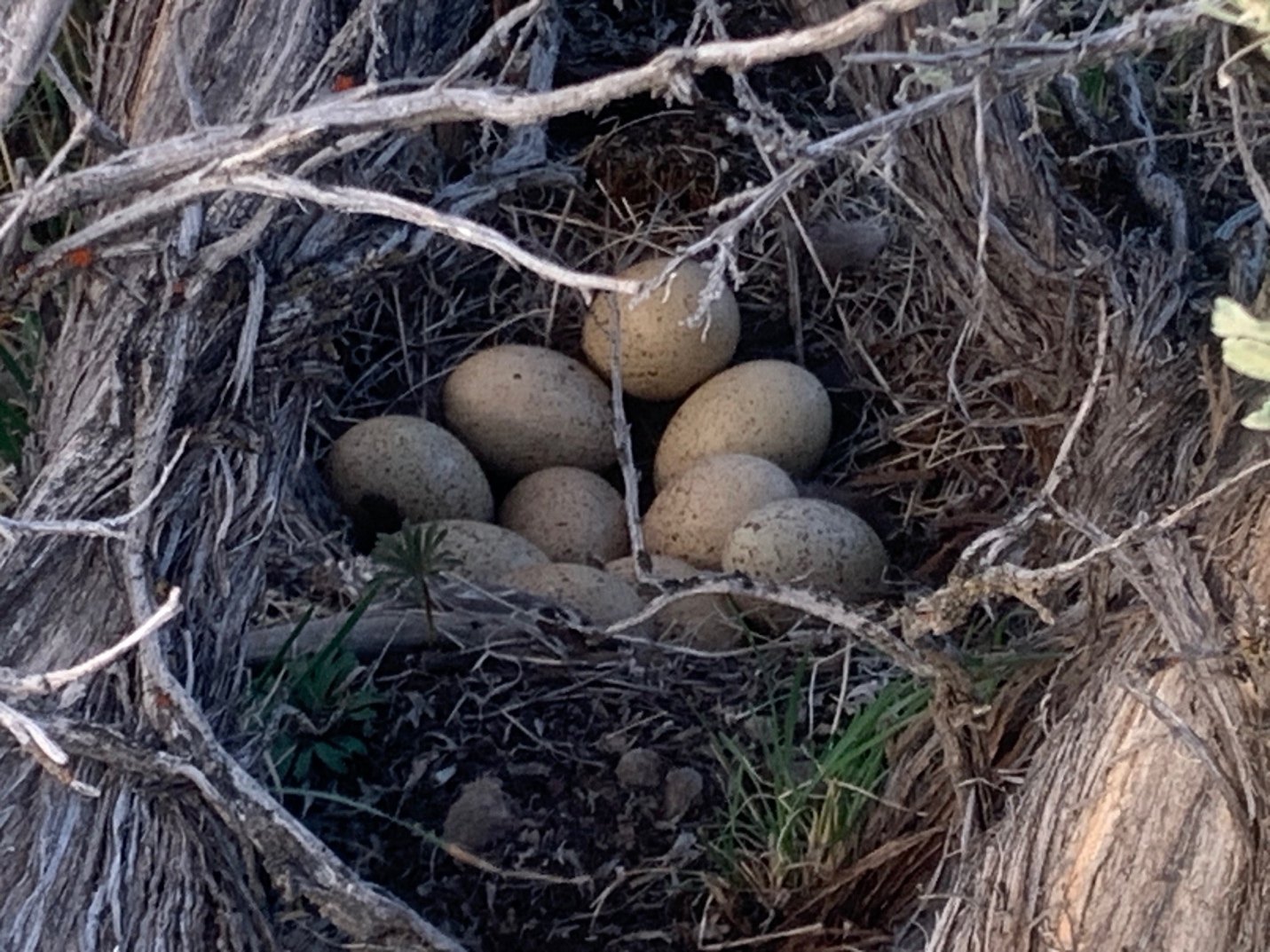
2025 Sage-grouse nest in Jindalee project area within ¼ mile of project area lek. It’s concealed in unfragmented dense, old growth big sagebrush as shown in first photo in this article.
Development of a mine here would be a severe blow to the Sage-grouse population. The project area lies in a big basin or bowl. Non-stop mining noise and visual intrusion would have a major Sage-grouse habitat disturbance footprint extending several miles outward. Much of the surrounding landscape burned in a 2012 fire, so the block of mature sagebrush within the project area is critically important to the birds. It’s their nesting, brood rearing and wintering habitat. It’s also home to Pygmy Rabbits, nesting territories for declining songbirds sensitive to habitat fragmentation, and vital Mule Deer and Pronghorn range. All these values are detailed in a Caldera-wide Area of Critical Environmental Concern proposal WildLands Defense submitted to BLM in 2023. BLM never acted on it. Last week I got a letter saying they received it, after I again submitted it during the 5-day commenting blur.
Rare Plant Habitat Will Be Wrecked
The drilling project will be disastrous for several Oregon rare plants. BLM admits “approximately 145 occurrences (16 percent) of BLM Sensitive plant species within the Project Area would be directly impacted by being removed or disturbed. Many of these areas are the highest density and highest quality rare plant populations. Other impacts to their habitats include “fugitive dust, physical disturbance during construction, trampling from vehicles and equipment, competition or loss of habitat due to weed encroachment, and compaction of soils, which may indirectly inhibit water and nutrient availability for native vegetation”.

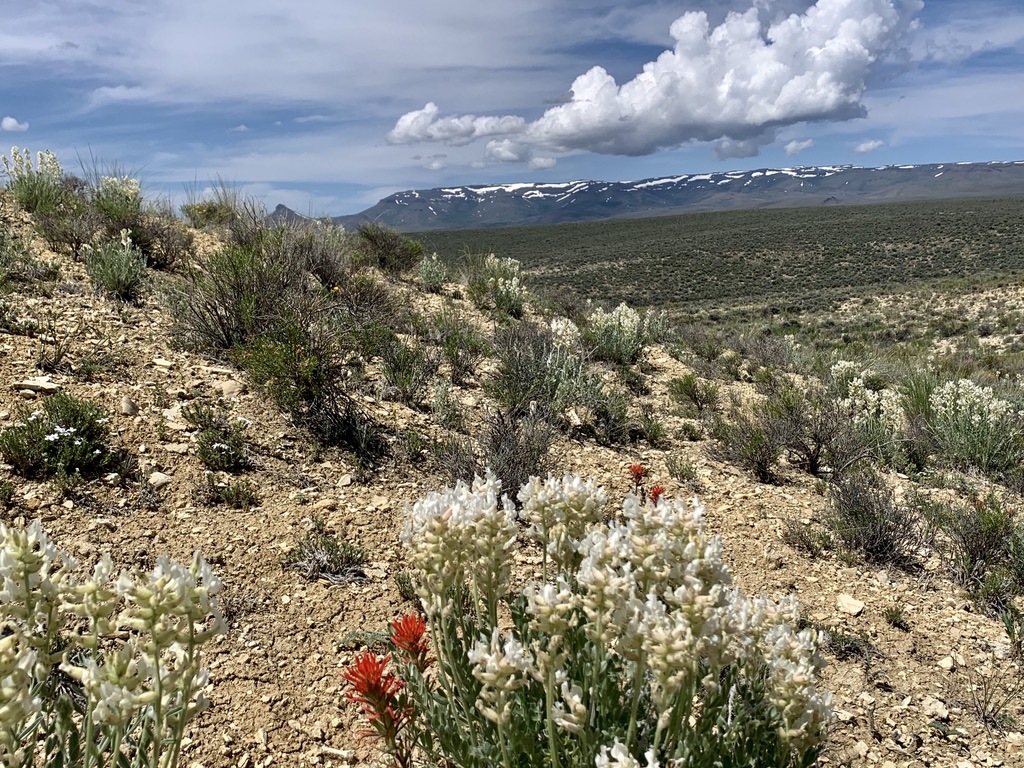
Ridgeslope clay soil rare plant habitats, the areas of highest density, are greatly targeted by the Jindalee drilling scheme.
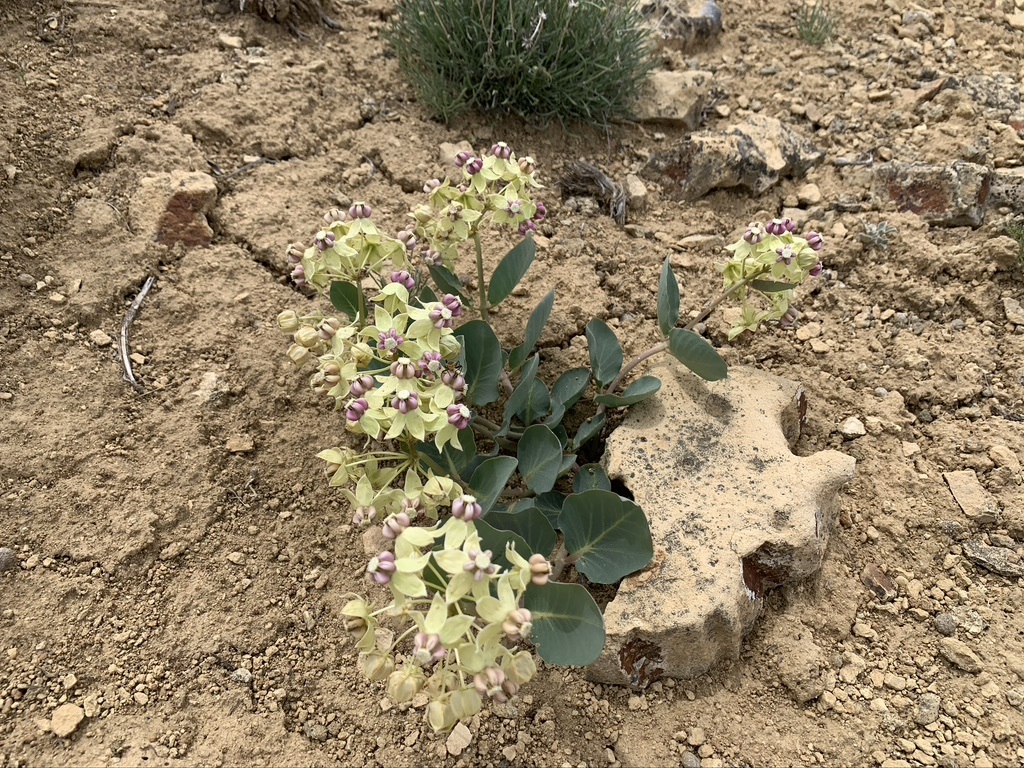
Humboldt Mountains Milkweed.
BLM mapping shows a significant amount of Monarch Butterfly habitat. Humboldt Mountain Milkweed inhabits the arid clay soils These beautiful plants face drilling-caused weeds that then spread outward far beyond the exploration sites. There are many culturally significant food and medicinal plant niches found here.
Where Are Oregon’s Senators?
After Trump axed a Biden administration mineral withdrawal by the Boundary Waters Canoe Area, Minnesota Senator Tina Smith promptly introduced Congressional legislation to withdraw lands there threatened by copper-nickel sulfide mining.
Why aren’t Oregon Senators pushing back on the lithium (and also uranium) mining boom onslaught threatening the McDermitt Creek watershed? Both have talked big about saving Sage-grouse. The imminent mining destruction of some of the last best habitat in this unique Oregon landscape is impossible to mitigate – no matter how many lies BLM and state agencies may come up with. Are the people of McDermitt and the Fort McDermitt Reservation who are facing community upheaval, mining pollution and cultural site desecration from Oregon projects considered expendable because they live just across the state line in Nevada, or are far away from Portland?
I’ve been told that Ron Wyden required the lithium and uranium mining-threatened Caldera area lands be left out of protections in his much-promoted Malheur land use bill that failed to pass in the last session of Congress. He appears to be actively working to facilitate the mining destruction of the Caldera, and has been praised by Jindalee for help getting a US DOE lithium research CRADA grant.
What’s Jeff Merkley’s excuse? Is it the mindless “lithium’s green” mantra that several Big Green groups have hidden behind to stay silent on Caldera mining for 5 years now, despite the Sage-grouse, cultural and other values at stake? If that’s it, I suggest he visit Thacker Pass to see how green lithium mining is. Merkley’s staffer attended a rather explosive June 2023 McDermitt BLM meeting and field trip where the ecological values at stake in Oregon, and the controversy and conflicts over lithium exploitation, were plainly laid out.
The Aurora Energy Metals lithium and uranium claims area is east of the Jindalee site. Aurora’s plan is to strip mine off the lithium, and extract uranium ore underneath. The uranium part is now under an agreement with another entity, Eagle Energy Metals. Their website shows the proposed uranium processing site a few miles west of McDermitt. This would make the local people very close by downwinders. The scheme is to shunt uranium quarried in Oregon across the state line to avoid Oregon regulations and process it on private land in the mining Wild West of Nevada. Constituents might ask Oregon’s Senators if they support the Aurora scheme including uranium processing, and Jindalee’s major proposed Sage-grouse habitat destruction.
Conversion of Thacker Pass to a Lithium Wasteland
Lithium Americas is now proclaiming that there’s so much lithium around, they’re going to need more phases of mine development and expanded processing facilities. The Nevada Independent recently reported“… the company’s announcement of three potential additional phases, is causing alarm in Orovada, an unincorporated town of roughly 150 people … that serves as the gateway to the project … This came as a huge shock to the communities of Orovada and Kings River, as Lithium Americas had assured us many times that they had no intention to expand the footprint of the mine to the area now proposed …”.
The news article references a report that seems to indicate the additional lithium is within the Thacker site, but now there’s talk of lithium out on the flats by the Quinn River bridge. Also, way back in 2016, a Lithium America report map showing their extensive claims in the Montana Mountains was labeled with specific development phases.
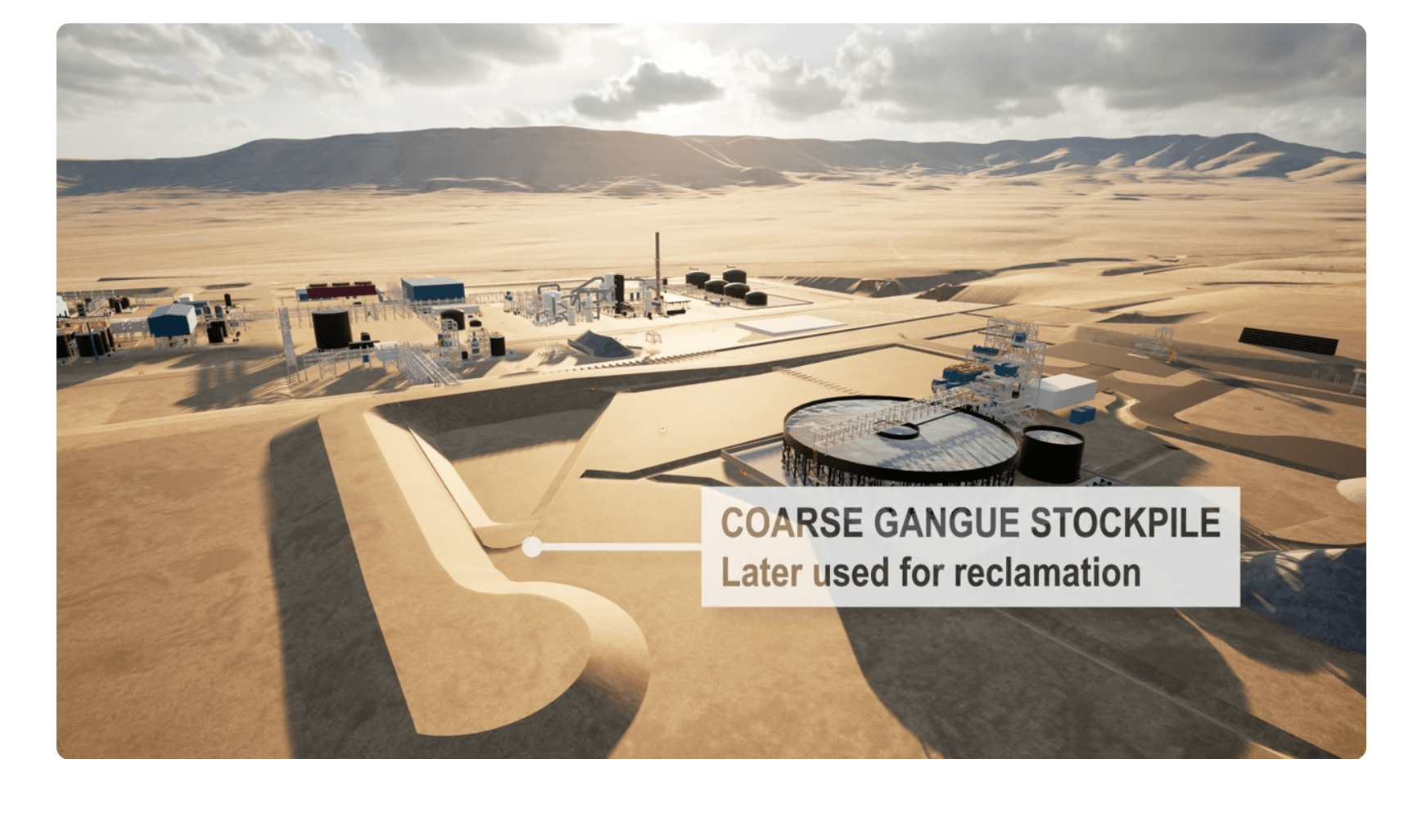
Bechtel video screenshot.
Construction company Bechtel (of bloated Iraq War contracts and never-ending Hanford nuclear waste clean-up fame) is the contractor building the Thacker Pass lithium processing facilities. They’ve generated a video with illustrations of the post-apocalyptic hell zone Thacker Pass is being turned in to.
The Bechtel video makes questionable assertions about the projected economic impact of Thacker Pass mine operation, apparently referring to a UNR report with inflated multiplier effect estimates. It also contains images of the Man Camp “worker hub” where 2000 temporary construction workers are to live down by Winnemucca. Rumor has it that because mine development lagged far behind schedule, the housing units sat unoccupied for months wrapped in plastic, developing black mold that needed to be cleaned up.
Nevada has become the welfare mining capital of the country, with Lithium Nevada’s Thacker Pass ($2.26 billion loan) and Ioneer’s Rhyolite Ridge ($1 billion loan) having gotten huge DOE handouts. The state’s politicians are now fretting about the possibility of the bonanza of mining subsidies possibly being reduced.
A Nevada land protection from the Biden administration has been slashed. Under the banner of removing “burdensome regulations”, Trump stripped an oil and gas drilling, mineral and geothermal withdrawal in the Ruby Mountains. Even mine-crazed Nevada Senator Catherine Cortez-Masto had supported that withdrawal.
In a legal case that’s received minimal media attention, Lithium Americas has embraced the brass knuckle tactics of the fossil fuel industry. The green Thacker lithium miners are pursuing a SLAPP suit to crack down on mine protests and silence opponents. People being prosecuted include a descendant of Ox Sam and several other activists. Ox Sam escaped a US cavalry massacre during the Snake War of Extermination. He fled towards Disaster Peak, a prominent landmark that looks down on the Jindalee site. Its power magnetically captures the visual field over vast areas and draws your eyes towards it. Tribal members consider this landscape to be sacred.
The ACLU and Human Rights Watch have released a new report about the injustice of Thacker Pass, The Land of our People, Forever United States Human Rights Violations against the Numu/Nuwu and Newe in the Rush for Lithium.
“Bands of northern Paiutes, western Shoshones and Bannocks have a history with the United States Government,” said Gary Mckinney, spokesperson for People of Red Mountain, an Indigenous rights organization. “That history includes mining, broken treaties, and Indian reservations which were established to assist in unwarranted land degradation caused by mining and livestock grazing on ancestral Paiute, Shoshone and Bannock hunting and gathering landscapes.”
Where will this all end up? The mining industry is rife with speculation and boom and bust cycles. Right now, lithium prices have tanked. Hard rock mining, and processing of lithium bound in clay like the Caldera deposits, costs more than exploiting brine deposits. Alternative battery types are being developed. Who knows what the Trump tariff mania will bring about. It would be a tragic loss of biodiversity if the Jindalee project moves forward, and the sagebrush sea of the Oregon McDermitt Caldera lands gets turned into the wasteland depicted in Bechtel’s Thacker Pass video.
As I was writing this, Interior Secretary Burgum, citing permitting gridlock, added the Jindalee project to a FAST-41 list intended to speed up federal approval. Today he’s madly claiming there’s been a War on Mining in the US, and we’re gonna “Mine, Baby, Mine”. Just wait – I’m betting that mining projects rammed through under urgent assertions of “USA, USA” today will end up exporting US-mined minerals to foreign shores as soon as it becomes expedient, or the price is right.
Please help get many more comments on the McDermitt Lithium Project e-mailed to Vale BLM at BLM_OR_VL_LithiumHiTech@blm.gov by April 25. You can also submit a comment here.

The post Trump’s Lust for Minerals: The Latest from Oregon’s Lithium Prospect appeared first on CounterPunch.org.
This content originally appeared on CounterPunch.org and was authored by Katie Fite.